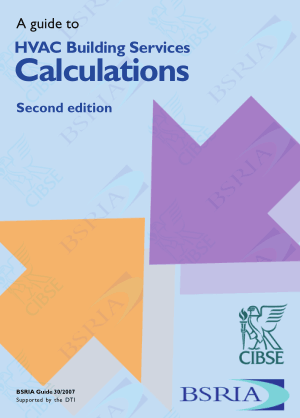
This "HVAC Systems Design Handbook Fourth Edition By Roger W.Haines and C.Lewis Wilson" book is available in PDF Formate. Downlod free this book, Learn from this free book and enhance your skills .
This chapter is devoted to ‘‘fundamental’’ fundamentals—certain principles which lay the foundation for what is to come. Starting with the original author’s suggested thought process for analyzing typical problems, the reader is then exposed to a buzzword of our time: value engineering. Next follows a discussion of codes and regulations, political criteria which constrain potential design solutions to the bounds of public health and welfare, and sometimes to special interest group sponsored legislation. The final sections of the chapter offer a brief review of the basic physics of heating, ventilating, and air conditioning (HVAC) design in discussions of fluid mechanics, thermodynamics, heat transfer, and psychrometrics. Numerous classroom and design office experiences remind us of the value of continuous awareness of the physics of HVAC processes in the conduct of design work. Every HVAC design involves, as a first step, a problem-solving process, usually with the objective of determining the most appropriate type of HVAC system for a specific application.
It is helpful to think of the problem-solving process as a series of logical steps, each of which must be performed in order to obtain the best results. Although there are various ways of defining the process. The results of the value engineering process now permeate our lives, and the techniques are pervasive in business. Consider our improved automobile construction methods, home appliances, and the like as examples. Even newer technologies such as those pertaining to television and computers have been improved by quantum leaps by individuals and organizations challenging the status quo as being inadequate or too costly. Alphonso Dell’Isolo is generally credited as being the man who brought value engineering to the construction industry, which indus try by definition includes HVAC systems. Dell’Isolo both ‘‘wrote the book’’1 and led the seminars which established the credibility of the practice of value engineering in architectural and engineering firms and client offices across the land. There is a national professional society called SAVE (Society of American Value Engineers), headquartered in Smyrna, Georgia. The society certifies and supports those who have an interest in and com mitment to the principles and practices of the VE process. Value engineering in construction presumes an issue at hand. It can be a broad concern such as a system, or it can be a narrow concern such as a device or component. The VE process attacks the status quo in four phases.

A Guide to HVAC Building Services Calculations 2nd Edition by Kevin Pennycook, D. Churcher and D. Bleicher